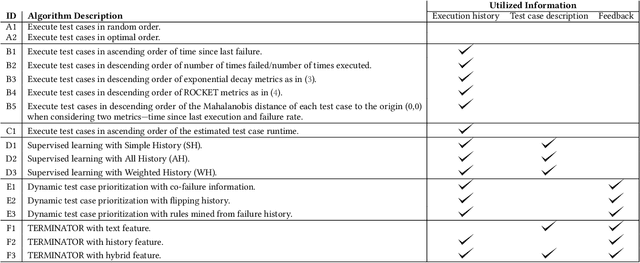Gregg Rothermel
Test Case Generation and Test Oracle Support for Testing CPSs using Hybrid Models
Sep 14, 2023



Abstract:Cyber-Physical Systems (CPSs) play a central role in the behavior of a wide range of autonomous physical systems such as medical devices, autonomous vehicles, and smart homes, many of which are safety-critical. CPSs are often specified iteratively as a sequence of models at different levels that can be tested via simulation systems at early stages of their development cycle. One such model is a hybrid automaton; these are used frequently for CPS applications and have the advantage of encapsulating both continuous and discrete CPS behaviors. When testing CPSs, engineers can take advantage of these models to generate test cases that target both types of these behaviors. Moreover, since these models are constructed early in the development process for CPSs, they allow test cases to be generated early in that process for those CPSs, even before simulation models of the CPSs have been designed. One challenge when testing CPSs is that these systems may operate differently even under an identically applied test scenario. In such cases, we cannot employ test oracles that use predetermined deterministic behaviors; instead, test oracles should consider sets of desired behaviors in order to determine whether the CPS has behaved appropriately. In this paper we present a test case generation technique, HYTEST, that generates test cases based on hybrid models, accompanied by appropriate test oracles, for use in testing CPSs early in their development cycle. To evaluate the effectiveness and efficiency of HYTEST, we conducted an empirical study in which we applied the technique to several CPSs and measured its ability to detect faults in those CPSs and the amount of time required to perform the testing process. The results of the study show that HYTEST was able to detect faults more effectively and efficiently than the baseline techniques we compare it to.
TERMINATOR: Better Automated UI Test Case Prioritization
May 16, 2019



Abstract:Automated UI testing is an important component of the continuous integration process of software development. A modern web-based UI is an amalgam of reports from dozens of microservices written by multiple teams. Queries on a page that opens up another will fail if any of that page's microservices fails. As a result, the overall cost for automated UI testing is high since the UI elements cannot be tested in isolation. For example, the entire automated UI testing suite at LexisNexis takes around 30 hours (3-5 hours on the cloud) to execute, which slows down the continuous integration process. To mitigate this problem and give developers faster feedback on their code, test case prioritization techniques used to reorder the automated UI test cases so that more failures can be detected earlier. Given that much of the automated UI testing is "black box" in nature, very little information (only the test case descriptions and testing results) can be utilized to prioritize these automated UI test cases. Hence, this paper evaluates 17 "black box" test case prioritization approaches that do not rely on source code information. Among which, we proposed a novel TCP approach, that dynamically re-prioritizes the test cases when new failures are detected, by applying and adapting the state of the art framework from the total recall problem. Experimental results on LexisNexis automated UI testing data showed that, our new approach (which we call TERMINATOR), outperformed prior state of the art approaches in terms of failure detection rates with negligible CPU overhead.
 Add to Chrome
Add to Chrome Add to Firefox
Add to Firefox Add to Edge
Add to Edge